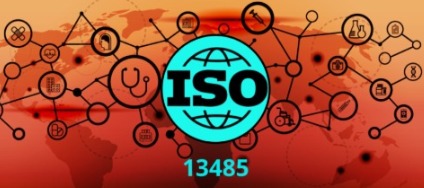ISO 13485:2016 specifies requirements for a quality management system where an organization needs to demonstrate its ability to provide medical devices and related services that consistently meet customer and applicable regulatory requirements. Such organizations can be involved in one or more stages of the life-cycle, including design and development, production, storage and distribution, installation, or servicing of a medical device and design and development or provision of associated activities (e.g. technical support). ISO 13485:2016 can also be used by suppliers or external parties that provide product, including quality management system-related services to such organizations.
Requirements of ISO 13485:2016 are applicable to organizations regardless of their size and regardless of their type except where explicitly stated. Wherever requirements are specified as applying to medical devices, the requirements apply equally to associated services as supplied by the organization.
The processes required by ISO 13485:2016 that are applicable to the organization, but are not performed by the organization, are the responsibility of the organization and are accounted for in the organization's quality management system by monitoring, maintaining, and controlling the processes.
If applicable regulatory requirements permit exclusions of design and development controls, this can be used as a justification for their exclusion from the quality management system. These regulatory requirements can provide alternative approaches that are to be addressed in the quality management system. It is the responsibility of the organization to ensure that claims of conformity to ISO 13485:2016 reflect any exclusion of design and development controls.
If any requirement in Clauses 6, 7 or 8 of ISO 13485:2016 is not applicable due to the activities undertaken by the organization or the nature of the medical device for which the quality management system is applied, the organization does not need to include such a requirement in its quality management system. For any clause that is determined to be not applicable, the organization records the justification as described in 4.2.2.
What is ISO 13485?
EN ISO 13485 is the medical device industry's quality management system (QMS) harmonized standard; written to specify requirements for an organisation to design and implement a quality management system to demonstrate its ability to provide medical devices and related services that consistently meet customer and applicable regulatory requirements.
Patient safety is at the very heart of ISO 13485, with its main purpose being to ensure the consistent design, development, production, storage and distribution, installation or servicing and disposal of medical devices. ISO 13485 requires organisations to implement these processes in accordance with identified applicable regulatory requirements for the markets they intend to operate in.
ISO 13485 is a stand-alone QMS standard, based on ISO 9001:2008, which has been superseded by ISO 9001:2015. While ISO 13485 is based on the ISO 9001 process model concepts of ‘Plan, Do, Check, Act’, it is designed for regulatory compliance. Therefore, ISO 13485 includes particular requirements for organisations involved in the life-cycle of medical devices and excludes some of the requirements of ISO 9001 that are not appropriate. This makes it more prescriptive in nature and requires a more thoroughly documented QMS.
What are the benefits of being certified to ISO 13485?
ISO 13485 is hugely important to designers, manufacturers, and distributors of medical devices. Adopting this standard provides an effective solution to meet the comprehensive requirements for a QMS. Adopting ISO 13485 provides a practical foundation for manufacturers to address the regulations and responsibilities as well as demonstrating a commitment to the safety and quality of medical devices.
When it comes to medical device manufacturing, patient safety greatly depends on the quality and consistency of medical products, so ensuring effectiveness, control and maintenance of your QMS is critical to customers, stakeholders, patients and users, and regulatory agencies.
The value of ISO 13485 is not just in the implementation, but also in providing a tool for a thorough audit to test the effectiveness of the system. It provides the manufacturer with a higher level of confidence in the ability to consistently achieve and maintain compliance with regulatory requirements.
It can also help to minimise any surprises and failures which might adversely affect patient safety and damage a manufacturer's reputation.
An ISO 13485 certification gives both suppliers and service providers the opportunity to greatly enhance an organisation's marketability as more and more manufacturers require certification in order to do business with a vendor.
Successfully certified organizations are able to demonstrate the effective interconnectivity of their processes. It is essential to be able to demonstrate how outputs from complaints, for example, feed into management review, improvement processes, Technical Documentation and risk management updates, to name a few.
ISO 13485 and Product Certification
ISO 13485 is the internationally accepted standard a medical device organisation can implement to demonstrate compliance with MedTech legislations.
Obtaining an ISO 13485 Certification with BSI ensures worldwide recognition for your organisation compliance with ISO 13485 requirements.






